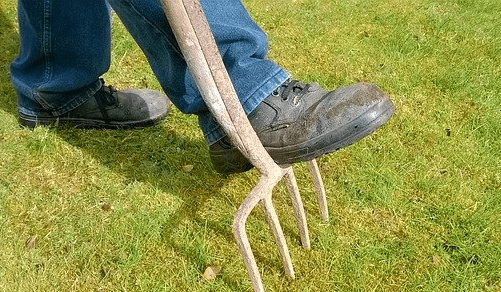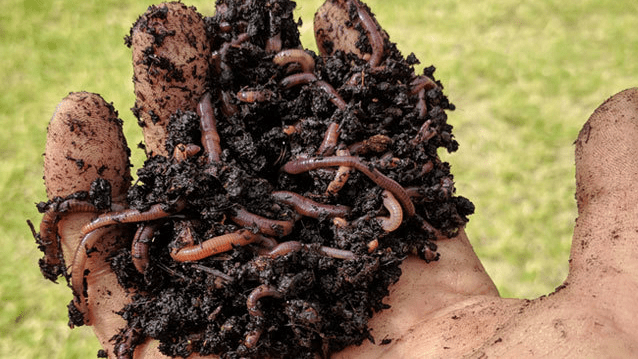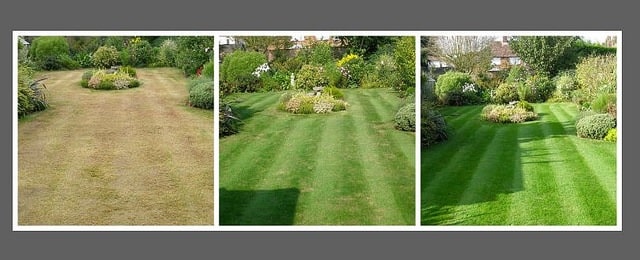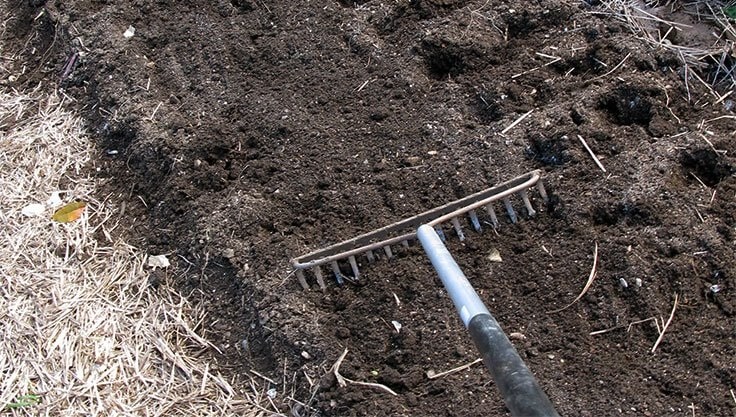
The mole is an unpopular contemporary in the garden. Although he can help you exterminate pests, but his mounds leave an unsightly crater landscape. Probably no gardener wants such an animal plowing up the garden and leaving such a mess.
You can protect your garden with a mole grid. But how exactly is this used and what you need to consider?
Contents
Drive out the mole
Once the mole is in your garden and has made itself at home, it is very difficult to get rid of it. Do not kill the mole or otherwise put it under stress. If you resort to brutal methods to drive the mole out of the garden, then you are sometimes in violation of animal welfare laws.
Here, you can face hefty fines in the four-digit range. So if you are worried about the mole taking up residence in your garden, the best method is to not let it into your garden in the first place, or at least protect your lawn.
A mole grid is laid under the turf and prevents new molehills from piling up.
Keep the mole out
The mole may well find its way underground, but it does not penetrate the ground particularly deeply. He is quite industrious, and the entire tunnel complex can be more than 200 meters in length, but with a depth of about 70 centimeters, he does not exactly penetrate to great depths.
This can be enough and useful to you when laying the mole grid. In this case, you do not have to be afraid that the mole will go about several meters in depth. If he encounters an obstacle, then he prefers to look for another way and instead of working his way down, he looks for other alternative ways. Therefore, the mole grid is excellent for preventing the mole from reaching the surface and raising its mounds.
Mole grid or mole net
There are several ways to keep the mole off the lawn surface. The simplest is with a mole grid. The grid represents a fixed obstacle that is insurmountable for the mole.
In comparison, the mole net is soft and deforms under load. Mole nets are very inexpensive variants to secure your own garden.
They are laid under the turf and then backfilled with soil. This prevents the mole from raising new mounds.
Theoretically, mole nets can last for decades. In practice, however, it turns out that voles and other rodents can get at these nets more often. With their sharp teeth, they can cut the nets, making them ineffective. Moles are not so skilled and are effectively kept away by the nets, but if the net is already damaged, of course, the mole has an easy passage.
Nevertheless, mole nets are a very cost-effective way to keep the moles out. Mole nets, on the other hand, cost many times more.
The mole grid
If you are looking for a solid, sturdy and long-term solution against moles and voles, then a solid grid is the only protection option for your garden.
Mole grids are much heavier and more conspicuous than light nets, but they provide better protection. The grid can be used in two different ways.
First, it can be used at the edge of the garden as a mole barrier or under the lawn as a direct protection against the mounds.
Laying it horizontally under the lawn is especially good for your garden and the mole. After all, the mole is quite a useful animal. Eats it, after all, some pests and can thus ensure better health of your plants. So, if you just want to prevent the mole from throwing up mounds, but still benefit from its presence, then laying the mole grid horizontally is recommended.
If you want to keep the mole out, then you can also use the mole grid as a mole barrier. In this case, the grid is laid at the edge of the garden and creates a barrier. The mole will not see any possibility to enter your garden and will stay somewhere else.
How to lay the mole grid
Here you need to distinguish between laying the horizontal and vertical grid. Here now follow both methods and you can decide for yourself which you prefer.
Horizontal grid
If you want to lay the grid horizontally, then you must first measure the total area. After that, there should be enough material to equip the entire garden horizontally with the mole grid.
Now you can lay out the grid on a flat ground. In order for the grid to fit, you will need to cut it to size. To do this, you can take a box cutter or another sharp knife.
Cut the grids so that they overlap a bit and tie them together with cable ties. This way you will prevent them from slipping and they will have a stable hold.
If your garden meets a house wall directly, then the grid should be folded down there about 15 centimeters into the ground. In this way, you prevent the mole from the ground can simply come to the surface.
When you have now laid the grid around the entire garden, spread the topsoil on the grid. Here you should be very careful and do not step on the grid directly. Use the gaps and step on the soil there. Otherwise, there is a risk that the grid could shift.
After you have spread the topsoil everywhere, you can use the lawn without any restrictions. Turf helps that the topsoil is firmly rooted. This can continue to grow well in these conditions, and the grid will not be an obstacle.
The grid should be about 10 centimeters deep in the ground. This will ensure that the grid will not interfere when scarifying. A greater depth can also be chosen, but in this case there is a risk that the mole will dig through above the grid.
Laying a vertical mole barrier
If you have already laid out your garden, then it is understandable that you want to do without horizontal laying. After all, here you will have to dig up the entire garden. If the garden is already laid out, then the vertical mole barrier is more suitable.
To keep the mole out of the garden, do this by creating a trench at the edge of the garden. This should be so deep that the grid in the ground just disappear with the upper end. As a rule, the mole barrier should not be buried deeper than 50 centimeters into the ground. The mole rarely goes to deeper regions.
Now place the mole barrier in the trench. The individual segments should overlap each other in about 15 centimeters in length. The transitions are a frequent weak point. Therefore, these should be particularly well fixed.
To fix them together, they can be nailed to a wooden board, for example. Gluing is also a good and durable solution.
After the entire perimeter of the garden has been secured with the mole barrier, the soil can be put back into the trench. The pressure of the soil will add weight to the barrier and make it harder for the mole to break through.
How to proceed with existing lawn
If your garden and lawn are already firmly established, then you have the following options for placing the grid in the garden.
One option is to take up the previous lawn and then lay the grid in the ground. After that, the grid is covered again with the soil.
A faster alternative can be used with sod. So you can lay the grid into the ground, cover it with a layer of soil and then roll turf
What to look for when buying
If you want to protect your garden from the mole, then the grid should be suitable for this task. Therefore, invest the money in a grid that brings sufficient weight.
To withstand the mole, the mole grid should have a weight of more than 500 grams. This indicates that it is a solid grid and the mole can not easily damage it.
The mesh size
When you look at the grids, you probably also wonder how big the mole actually is and which grids it could still overcome.
To prevent the mole from simply squeezing through the barrier, the grids must have a certain mesh size. Here, however, you should not only make sure that the mesh size is not too large, but also that it is not too small.
If the mesh size is too large, the mole has an easy time and can move through the grid. Now the consideration could be that the grid is as fine-meshed as possible. However, if the meshes are too small, beneficial earthworms will also be kept out of the garden.
An optimal mesh size is about 11 x 11 millimeters. Here, the mole no longer has a chance, but earthworms are not denied access.
The material
Mole grids are offered in different materials. Grids made of metal are not necessarily advisable. These can rust quickly and then lose their exclusionary effect.
A material that is becoming more and more popular for mole grids is the plastic PE-HD. This plastic is very resistant, durable and not electrically conductive.
The fact that the plastic does not conduct electricity is especially advantageous if you use a robotic mower on your property. The robotic mower is not affected by the plastic in any way.
In addition, you should make sure that a knot-free process was used to manufacture the grid. If the grid still consists of knots, then the mole could move them and get through the larger meshes.
However, buying a mole grid should not present you with a major challenge. The conventional solutions are already very much developed and effective against the mole.
Advantages and disadvantages
To keep the garden mole-free, there are several options. The mole grid is just one option, but how does it compare to other methods?
Advantages
Horizontal grids are particularly animal-friendly and no mole will come to harm. They can be laid in the garden, effectively protecting it from the dug molehills, but still allow the lawn to grow undisturbed.
When mowing the lawn, the mole grate makes the work noticeably easier. There is no longer any need to tamp down the mounds.
Moreover, the mole does not have to be captured or even killed. From a legal point of view, you are also on the safe side, because the installation of the grid is compliant with the law and you do not have to expect a fine.
Moreover, scaring away the mole with special scents is not always successful. Not every mole is impressed by it. Moreover, you will have to use this method again and again when a new mole strays into your garden.
Once you have laid the grid, then you do not have to worry about a mole making your garden unsafe. The grids will secure your garden in the long run and can provide safe protection even for several decades.
Not only will the grids protect you from the moles, but it can also keep voles and other rodents away from your plants.
Disadvantages
Nevertheless, there are also some disadvantages associated with the mole grid. First and foremost among them is the high amount of work involved. Both the effort to install the grids in the lawn and the price reflect the high effort.
In addition, if you want to bring something into the garden, for example, plant a tree, then the horizontal grid can be in the way. This is because the root system cannot simply move through the mesh. To do this, a hole must be cut in the grid, which will require extensive patching to ensure that it really fits snugly against the tree.
After laying, it can also happen that individual grids are pushed up again. These become tripping hazards and must be reworked in any case.
Conclusion
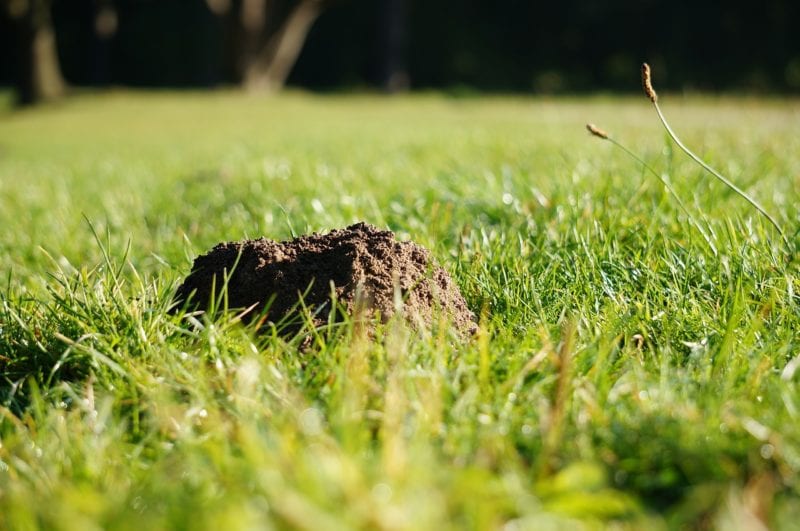
Are you looking for an effective and gentle way to protect the garden from the mole?
Then a mole grid is an ideal product to avoid the unsightly mounds in the garden. The grid is either buried horizontally under the lawn or placed vertically in the ground at the edge of the garden.
This blockage can keep both moles and voles out of the garden. The effort to install the grid is relatively high, but the grids last for several decades.
Once the grids are installed, they are no longer visible from the outside. Especially for the mole this is a very animal-friendly method to keep it out of the garden.
With the help of the horizontal grids, the mole can even be let into the garden and do its positive work without being able to raise the mounds.
So if you want to avoid the sight of mounds then the mole grid is a very good way to protect the garden.



